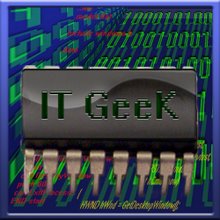First of all I wish to say hello to everyone! This is my first post here this 2008. I got some problems I needed to take care of(study, family, education), which restricted me from my freedom. But now it's all gone, and I would love to revive and refresh my beloved blog with this EXTRODINARY innovation from the NOKIA and Cambridge University collaboration. They presented one device named "Morph" which made my skin turn pale and my hair went white! You can watch and read about it here... http://www.allaboutsymbian.com/news/item/6840_Nokia_and_Cambridge_Univiversi.php
From what I understand, this device contains more transistors than a hall full of super computers, I mean seriously 10k transistors per a fly's hair, which is a lot smaller than a human hair! Pretending that a fly has 100(I may be inaccurate here, because I don't know anything about flies) hairs, that makes 100*10k transistors just for the hairs of the fly. Considering that the hairs are at least 2% (again, I don't know this exactly, I'm just using my imagination) of a fly's body , a whole fly can have 49*100*10k transistors. Now imagine that a today's processor in an everyday PC, can contain 20~30 flies. That makes 20~30*49*100*10k transistors! And not only that, these transistors are stretching and transparent... This made me think back into the past, when electronic engineers could only dream of such sizes and possibilities! The time of the radio lamp, which I'm sure are still used, I even keep some(gift from my grandfather). I hope this reminds everyone how fast technology grows, and how with every year, our world 'distorts' rapidly. I mean, what could be next, tiny little nanobots with advanced AI, capable of altering cells of humans and animals with rapid speed and preciseness, or that which can repair and regenerate these cells, granting humans the ability to live for a very long time? Or perhaps easy to use terminals and computers in every house, running with great speeds, and large memory storage sizes? So many possibilities and ideas! That's one hell of a journey, but are we prepared to take it? I say, let's fasten our seat belts and GO GO GO! The future awaits us!
**********************************************************
On a side note, I too make some innovations on my own, if you can even call them that! My tiny embedded computer starts to take shape. I replaced the controller from 18f452 to 18f4550. That means, that it can now support Full Speed USB(technically it doesn't yet have the ability to connect to the PC, I still need to learn how to make PC applications that can communicate with the PIC). This change increased the previous frequency of the computer from 40Mhz to 48Mhz. I also added a 32-bit SPI I/O expander (4xMCP23S08 cascaded together), switched to C (I believe the C compilers became intelligent enough to handle this type of microcontroller, although I'll still stick to assembly for certain subroutines, closely related to the "inner core" of the computer) and reshaped the strip board, which now is much smaller, and the wiring is not loosely positioned, with minimal risk of the wires touching each other near the pads, one knows what happens when it happens! ;) I plan to make a PCB for my computer, thus increasing possibilities (adding more ram, flash, I/O expanders, etc.). What I also would like to make my computer do, is use a PC application as a virtual color LCD. That will really easy my development of the PIC PC. As for the AT keyboard, I think I'll remove it and add a different type. I'll post some pictures later, to see my progress! Comments, would greatly be appreciated!
Blog Archive
Tuesday, February 26, 2008
Subscribe to:
Post Comments (Atom)

No comments:
Post a Comment